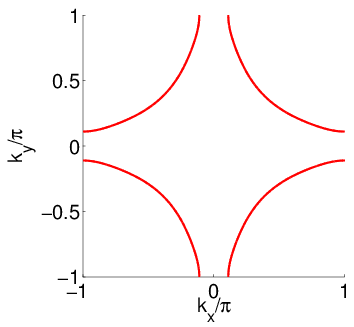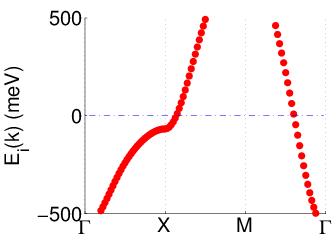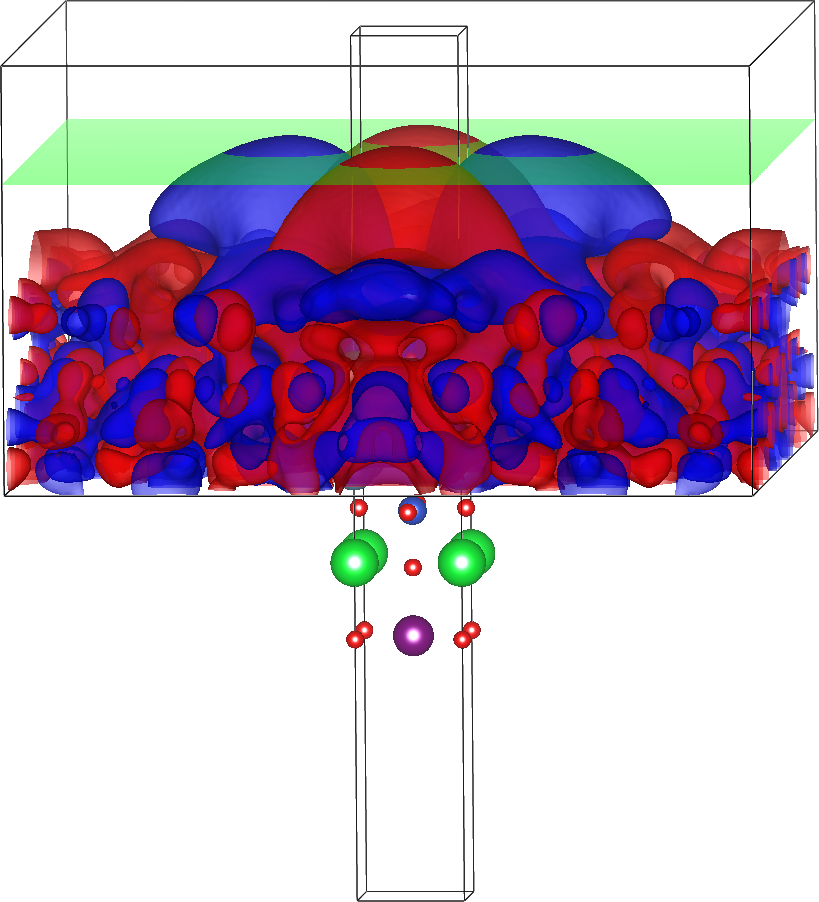BO /contentBottomTemplate
Tight binding models for high temperature superconductors
This page lists a set of tight-binding models that are suitable to describe high temperature superconductors
Some of the models have been compiled from the literature for comparison, others are calculated using first principles calculations or adjusted to match experimental measured quantities.
For each model, the hopping parameters are given in a comma separated file (csv), and basic plots of the band structure and Fermi surface are provided for comparison.
The tight-binding file contains lines with the following format:
rx, ry, rz, a, b, Re(t), Im(t)
Here ri is the i-th component of the real space vector that describes the hopping process, a and b are integer numbers labeling the orbitals and the last two entries are the real and imaginary part of the hopping (usually given in eV).
The corresponding Bloch Hamiltonian (in orbital representation) can be obtained by a Fourier transform and summation over all lines to yield the matrix Hab.
|
Models
|
|
1 band tight binding model for BSCCO from a DFT calculation using VASP. Details on the calculation can be found in the appendix of the associated publication.
To account for correlations, an overall renormalization factor of Z=3 was imposed to the hopping elements. In our work, we used this model to calculate tunneling spectra, conductance maps, topographies and other quantities
close to impurities in Bi2Sr2CaCu2O8, see the following publication for details:
|
Peayush Choubey, Andreas Kreisel, T. Berlijn, Brian M. Andersen, P. J. Hirschfeld
Phys. Rev. B 96, 174523 (2017)
Universality of scanning tunneling microscopy in cuprate superconductors

Fermi surface of the tight binding model at filling of n=0.425, see source tarball for details on the parameters
|

Eigenenergies along high symmetry directions of the Brillouin zone.
|

Wannier function as generated from an ab-initio calculation: Starting point is the crystal structure of BSCCO
where one half layer is replaced by vacuum, details in the Appendix of
Peayush Choubey, Andreas Kreisel, T. Berlijn, Brian M. Andersen, P. J. Hirschfeld
Phys. Rev. B 96, 174523 (2017)
Universality of scanning tunneling microscopy in cuprate superconductors
The plot shows an isosurface of the Wannier function (red/blue: negative/positive phase), a plane above the surface and the atoms in the elementary cell.
The plot is produced with the program VESTA, the required data files can be downloaded above.
|